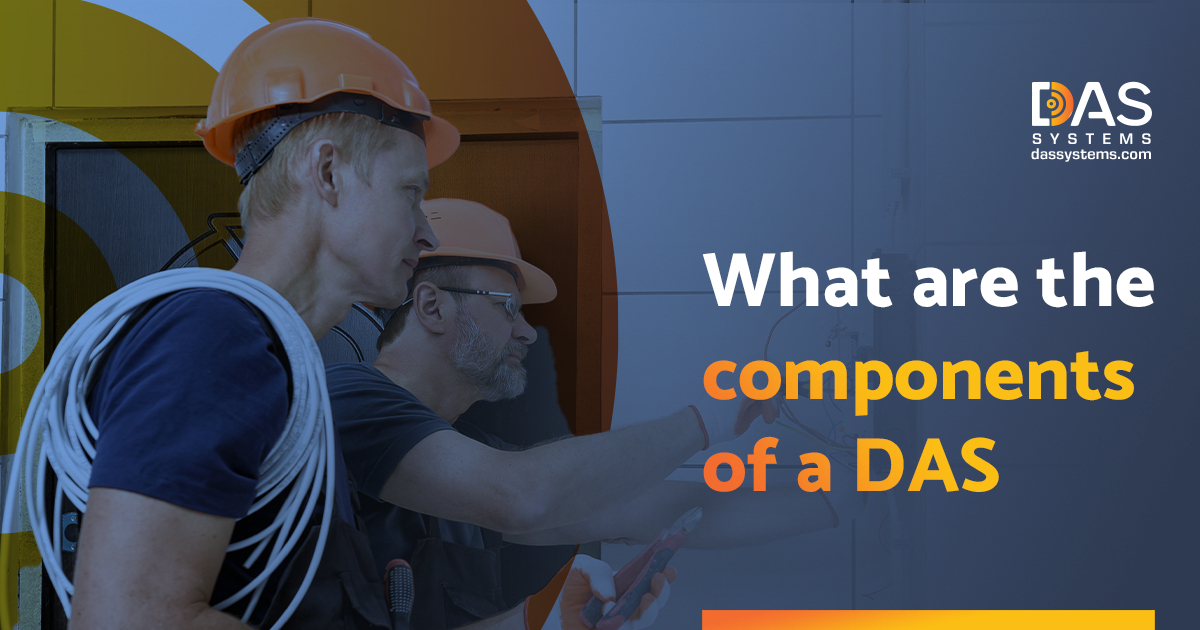What are the components of DAS?
Introduction
A Distributed Antenna System (DAS) is a wireless communications system that uses multiple antennas to provide coverage in an area. These systems can be used for point-to-point connections or multipoint connections, which allow you to connect many users with one base station.
A DAS is a network of interconnected hardware and software that allows mobile devices to transmit data using multiple antennas instead of just one. It’s used in various industries, including cellular networks, wireless networks, private enterprise networks, and more.
In this blog post, we dive deeper into what are distributed systems, and what makes up DAS systems components, and how they work together to get you the coverage needed throughout your building.
A- Base Station
A base station is a central hub that connects all the other components of DAS directly to a fiber optic network, emitting radio frequency (RF) signals out through the coaxial cables running throughout your building.
This allows you to control everything from one location, as base stations can be connected through hardwired connections or wireless networks, with each having respective advantages and disadvantages:
- Hardwired connections are faster than wireless ones because they don’t need networked devices between them and their destination (the remote radio heads). This makes it easier for businesses that need access quickly without sacrificing quality or security concerns.
- Wireless networks use antennas distributed throughout buildings, so each room has its own signal strength. This means you’ll probably have less coverage across your entire facility if there aren’t enough antennas installed everywhere.
B- Fiber Optics
Fiber optics send data from the base station to the antenna. A fiber optic cable is made of glass or plastic, which means it carries light signals and not electrical signals. It can rapidly transmit large amounts of information through extremely thin wires without losing any signal quality.
C- Radio Frequency Cables
RF cables are high-quality cables used to connect antennas to the base station. They’re also known as RF coaxial cables since they appear like an old-fashioned cord used to connect your TV to your antenna.
D- Coaxial Cable
Coaxial cable is a type of cable that consists of an inner conductor surrounded by a tubular insulator, which is surrounded by another conductor. Coaxial cables are used in many devices, including computers and televisions.
The main advantage of coaxial cable over other types of cables is that it can carry large amounts of power (wattage), while still having low losses and high bandwidth capacity.
This makes it ideal for high-speed data transmission over long distances, such as between cities.
E- Connectors and splitters
Connectors link fiber optic cables, coaxial cables, and RF cables to the antenna. These connectors can be made of plastic or metal, and come in different shapes and sizes depending on the type of connection that is required by your application.
On the other hand, splitters are used to distribute the signal to multiple devices. They are passive devices that split a cable into two channels and then connect them in series with each other.
F- Antennas
Antennas are used to transmit and receive radio waves and signals; they’re also known as phased array antennas or directional arrays because they can be rotated or tilted to focus their signal in a specific direction.
This is important for wireless communication because it allows you to send your message over long distances without losing quality along the way.
Antennas come in many shapes and sizes, but all of them share two basic components:
- An electrical circuit that transmits electricity through wires (called transmission lines) into another device
- An antenna that converts that signal into an electromagnetic wave so it can travel through space and reach its destination at high speeds (or even faster).
Conclusion
A DAS Network is a powerful tool that can enhance your building and business communications network and business development strategy.
A DAS capitalizes on simple and reliable components that improve a user’s overall connectivity and experience, which subsequently generates added value throughout your business.
Contact us to learn how we can help you with value engineering from start to finish.
Keep up with our updates and announcements on LinkedIn and Facebook, and check out our other blog posts to learn more about our DAS solutions.





